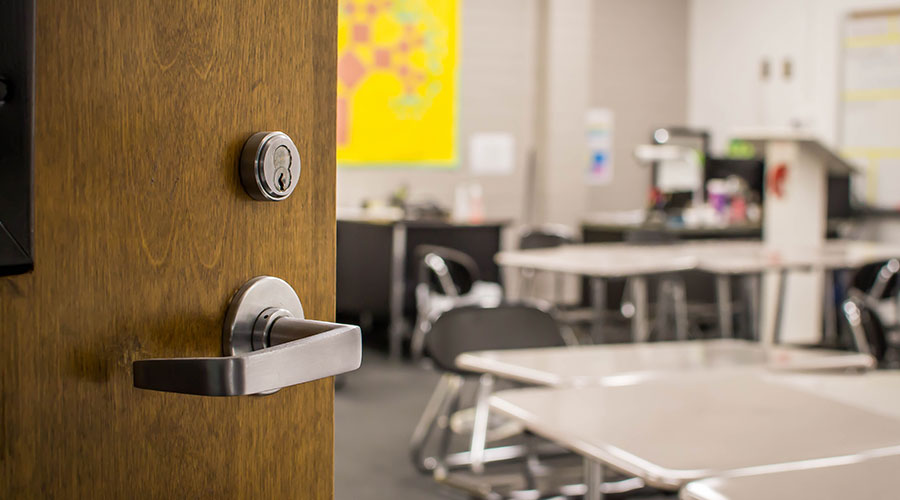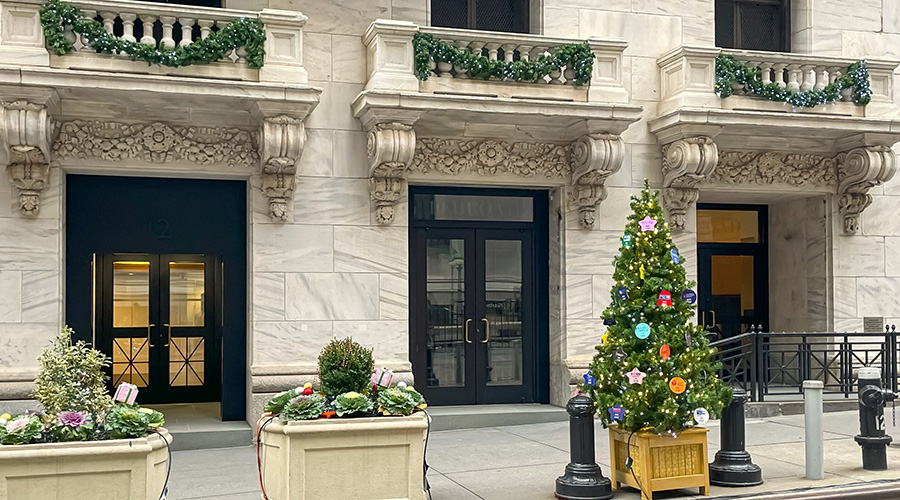Key and Card Technology Improvements Boost Door Security
As security and access control continue to climb on the priority lists for institutional and commercial facilities, maintenance and engineering managers are taking a closer look at the way their departments control the use of keys and cards occupants use to enter facilities. Managers are rethinking the specification of these items technicians and occupants use, as well as the process of storing, issuing, and tracking them.
By understanding both facility needs and advances in key-control and card-access systems, managers can update their strategies for matching existing technology with security needs.
Technology Advances
Keyless touchpads were introduced in the 1960s to prevent lost keys and implement entry and exit recording. To gain entry, users simply entered a three- to six-digit personal identification number (PIN) on the keypad. The technology is very robust. It can last for years and withstand the weather with no maintenance required, except to clean the keypad and change the PIN code.
Next came swipe cards, called key cards, featuring a magnetic stripe, followed in the 1970s by non-contact proximity cards for enhanced flexibility and security. The cards are used with access-control card readers. Connected to an intelligent door controller, the cards store programming information from access-control software, such as the who, what, when and where of entries. They also maintain history and generate reports logged; use integrated photo ID badging; and support digital-video and phone entry.
Whether wired or wireless, Grade 1 locks can withstand 180,000 cycles. The wireless version of these locks is a good way to expand security at all entries, one entry at a time, or only at remote doors. They combine with keypads to open with either a keypad or cards or both, and they can be programmed with 3,000 entry codes. Each code can be programmed to allow entry of one person, at only certain times, with 16 different schedules and certain doors.
The autologging of entries tracks activity by user and time up to the 30,000 most recent events, and they prevent problems with stolen or lost keys. The user does not know the combination, which is easily changeable or cancellable. They are battery-operated and unaffected by power outages, and they can be disabled one at a time or simultaneously in an emergency. The locks are preconfigured for the left hand but are changeable in the field.
Key override is another often-desirable feature. It can be key-in-lever, key-in-knob, with small-format interchangeable cores or large-format removable cores. There is capacity for 32 holiday-vacation exclusion periods. Locks can be preprogrammed to lock a certain period of time after opening. They comply with Americans with Disabilities Act accessibility guidelines, have a three-hour fire rating, and are certified ANSI/BHMA 156.2 Grade 1. They also have a three-year warranty, with a built-in warranty counter in the lock memory to simplify record keeping, and they can support multiple authority levels.
Related Topics:













